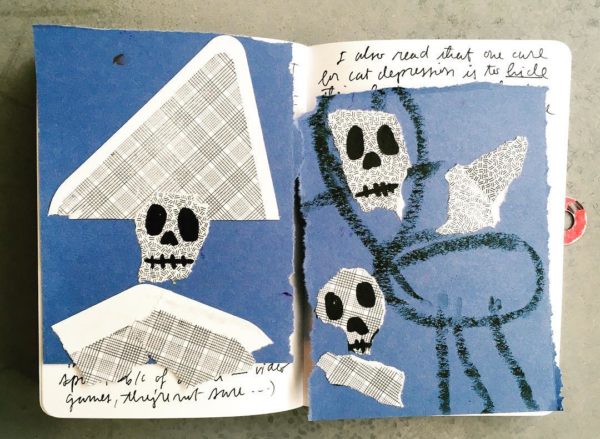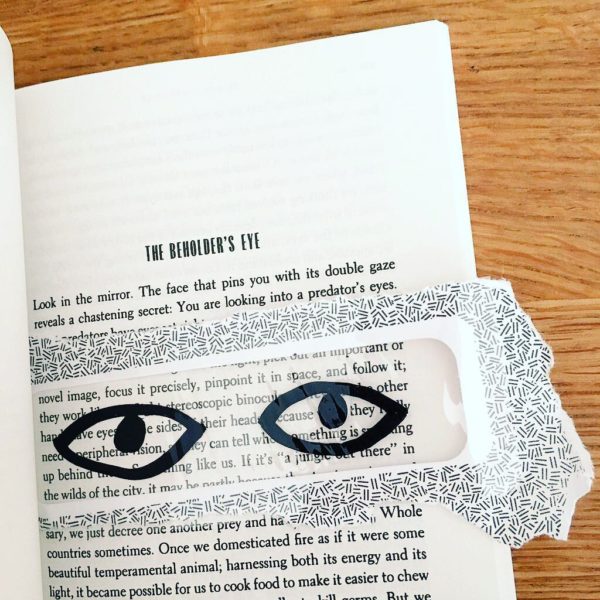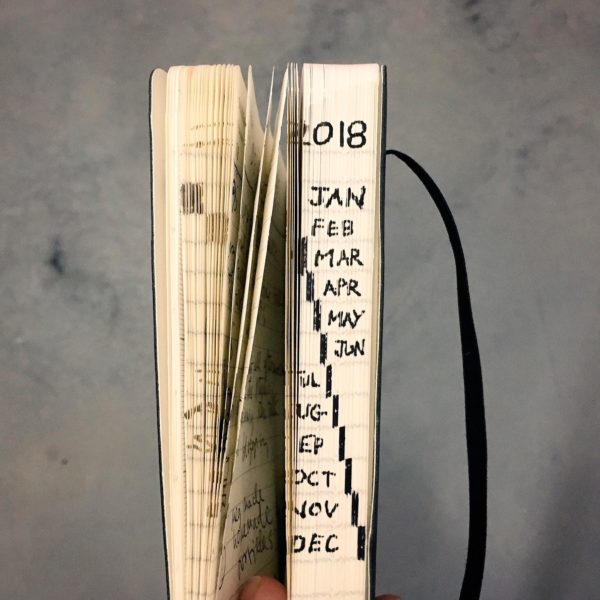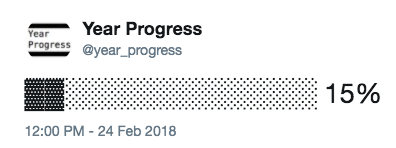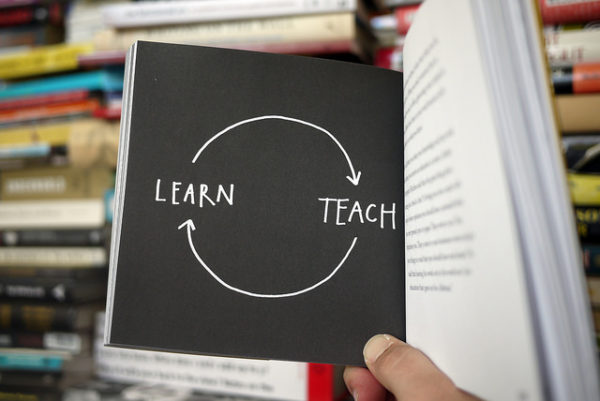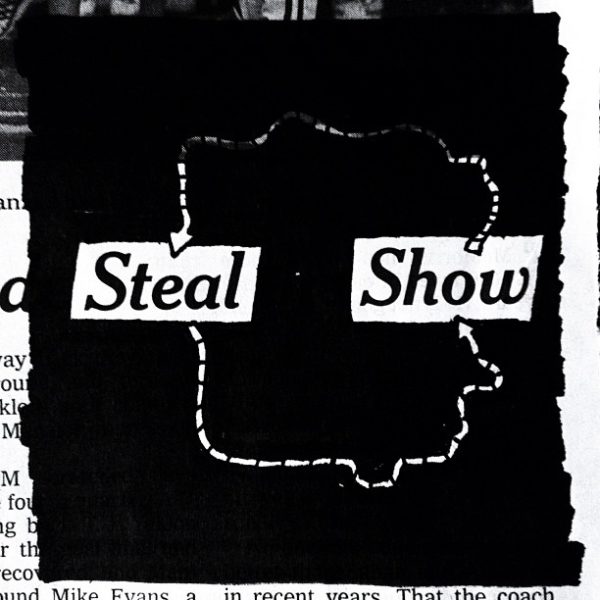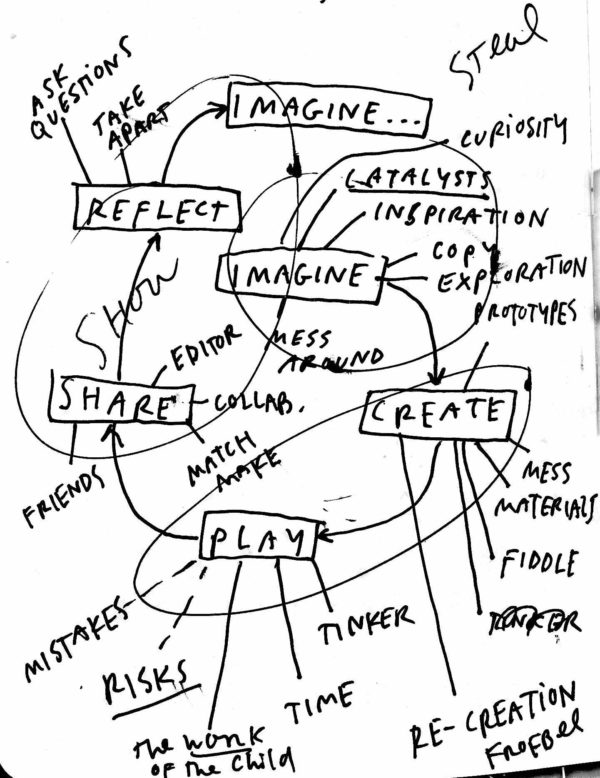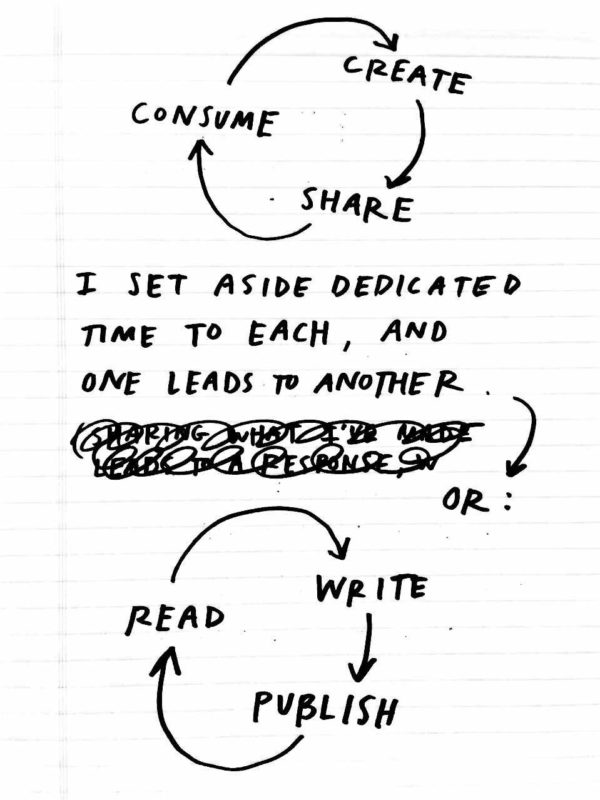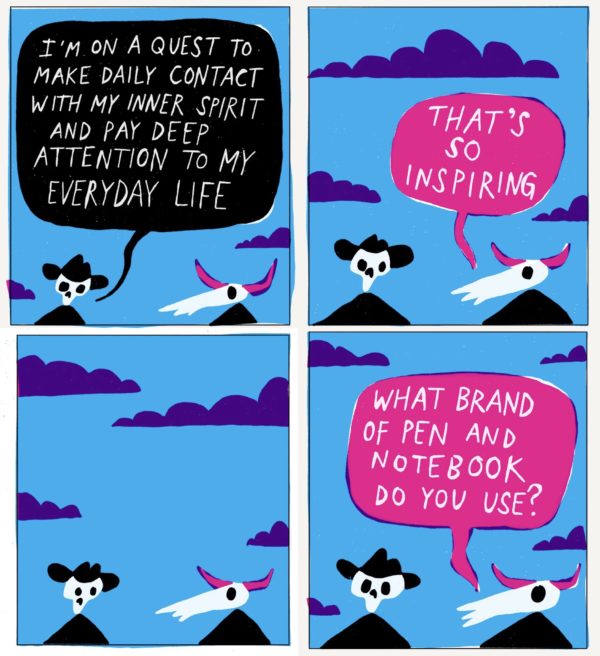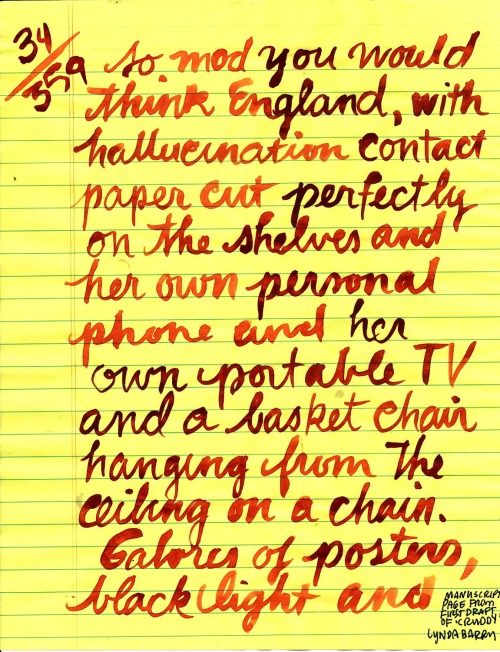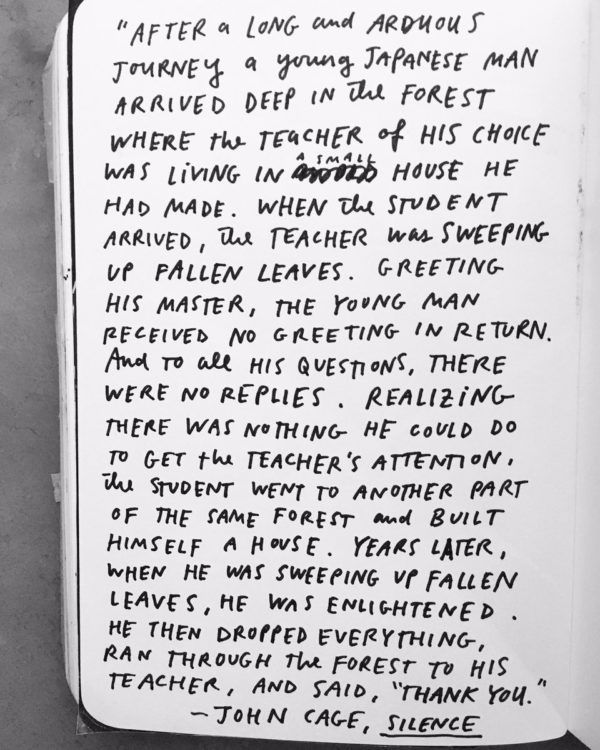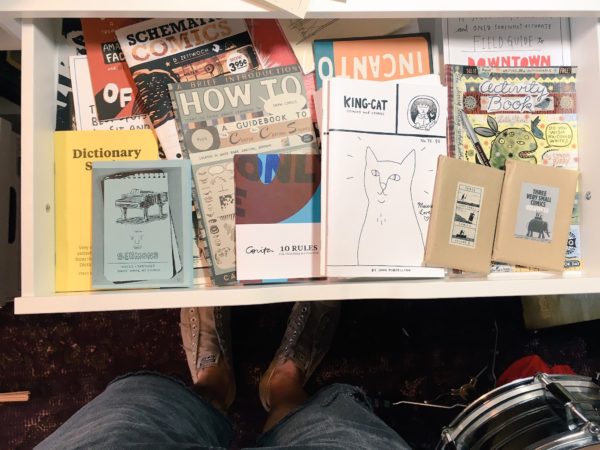
I think of all my books as fancy zines.
Whatcha Mean, What’s a Zine? I’ll let Wikipedia handle this:
A zine (/zi?n/ZEEN; short for magazine or fanzine) is most commonly a small-circulation self-published work of original or appropriated texts and images, usually reproduced via photocopier. Usually zines are the product of a person, or of a very small group.
When I’m working on a book, sure, I flip through my bookshelves, looking for stuff to steal, but what I really love to do is head over to my zine drawer (see above) and flip through zines.
Even though my books are printed in mass quantities overseas and are shipped all over the world, I want my books to feel handmade, like they’ve just come off the photocopier.
Back in December, I wondered in my diary if I should just go ahead and do a real zine, and work my way up to a book:

Maybe next time. Or maybe the country will collapse and this tweet will come true:
There’s something really special about zines. “Zines Had It Right All Along.” “The Internet Didn’t Kill Zines.” Even though “The Blissfully Slow World of Newsletters” can feel close to the spirit of zine culture, nothing digital seems to fully replace them. “A blog is not a zine.”
Whenever I do a workshop with students, zines are the perfect thing to make together: We make a bunch of blackout poems, each choose our favorites, and then we sequence them, everybody getting their own page. Then we run them on the photocopier, fold ’em, staple ’em, and everybody gets to take one home:

If you want to learn more about zines, check out this book and hit up your public library — several libraries actually have zine collections now! The new Austin Public Library has a whole section next to the comics:


